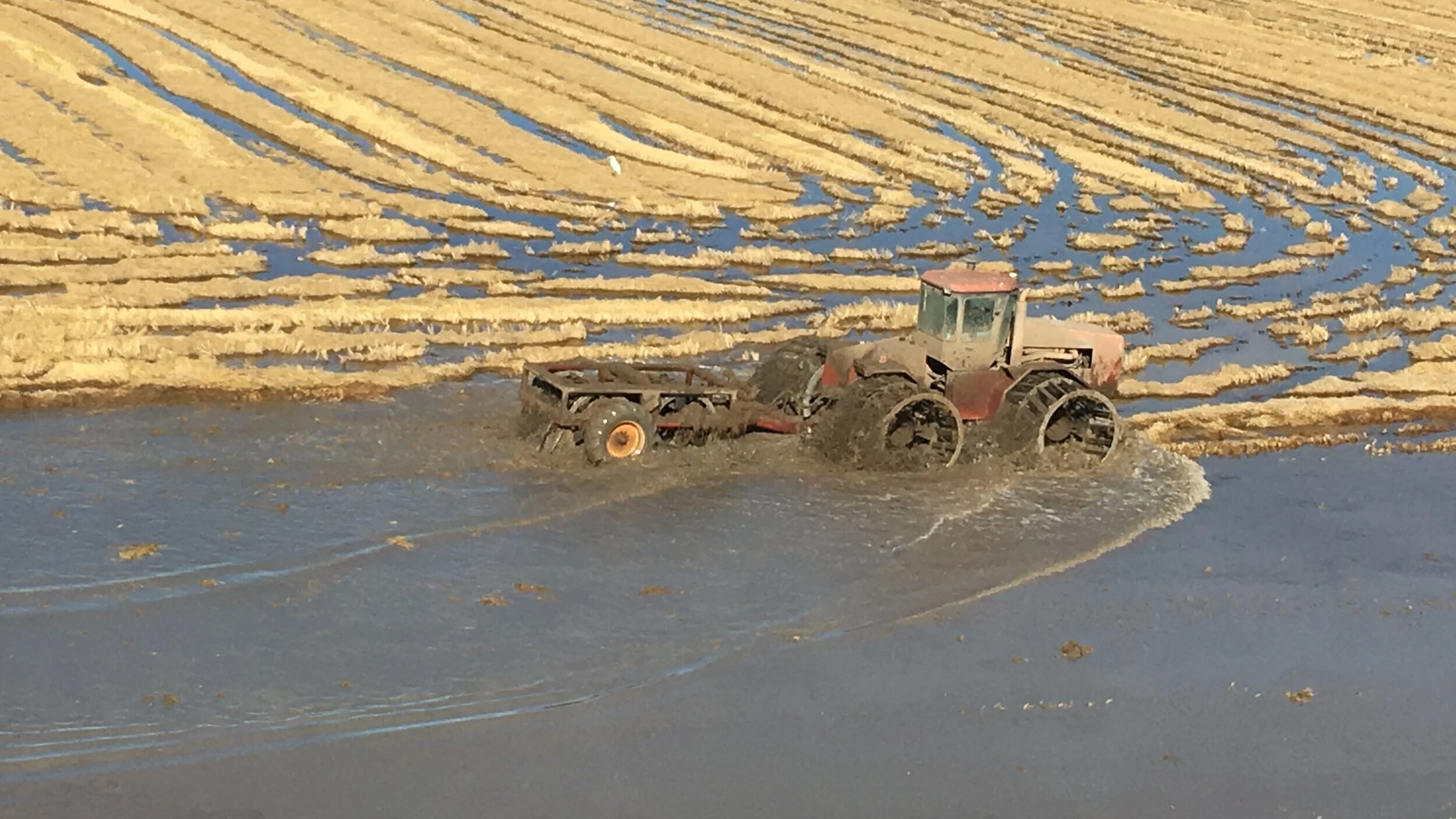"Farm advisers and producers involved in the study have found winter flooding to be a viable, cost effective and environmentally beneficial method of solving the rice straw disposal problem.” —
-Dr. Chris van Kessel, Dr. Willi Horwath: Managing Rice Straw
Research studies show the benefits of rice straw incorporation.
Using alternative methods, such as baling the straw, removes the rice straw from the fields — ultimately removing the nutrients the rice straw can provide to the soil. Rice straw incorporation still breaks down the straw, but offers several other valuable nutrients that enhance soil fertility over time.
Rice straw nutrients per acre
Rice straw incorporation increases the amount of nitrogen, potassium, sulfur, and phosphorus per acre — all contributing to better decomposition yields and growth.
Winter flooding.
Flooded rice fields provide approximately 300 pounds/acre of macro invertebrates. Therefore, winter flooded fields provide critical wetland habitat for wildlife, especially migratory waterfowl that pass through the Sacramento Valley during this period. Winter flooding is probably one of the most outstanding positive environmental effects of rice farming, and would not be achievable under any feasible alternative land use.
Stomping and rolling.
A variety of rollers are used to flatten rice straw against the soil to speed decomposition. This method provides easy access to the residual food because it is left on top of the soil. Even after grain and weed seeds are depleted, waterfowl and shorebirds remain in the fields to feed on insects and snails residing in the soil and decaying straw (Ducks Unlimited, Inc., 1995).
Supporting research.
Bruice Rice Straw Economics and Potassium Review
Rice Straw Study 2001

